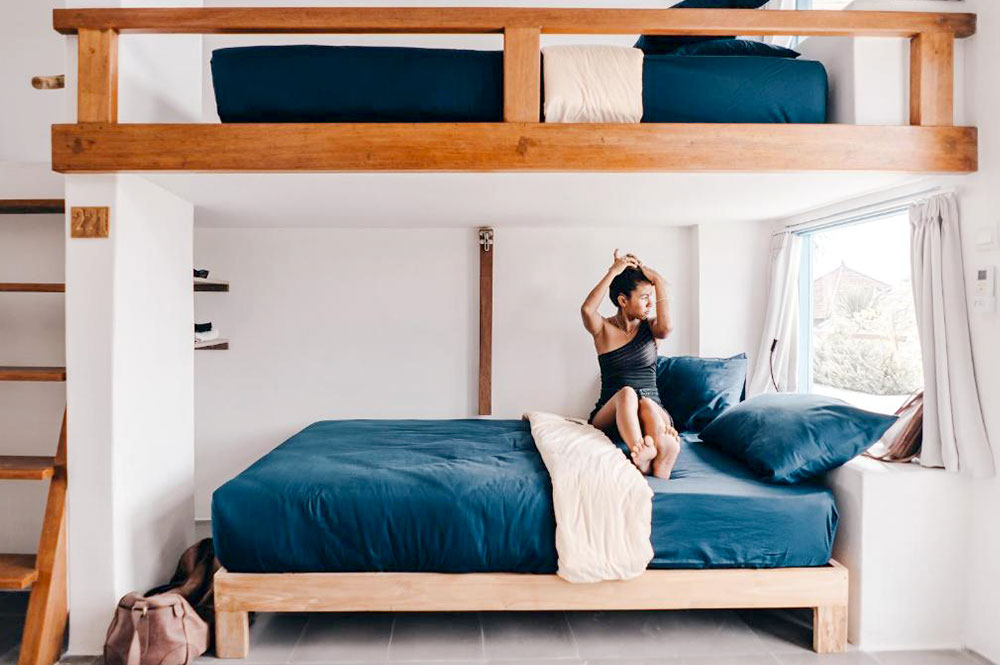What Is the Best Travel Insurance for Backpackers, Solo Travelers, and Digital Nomads?
SafetyWing vs Heymondo: Which Travel Insurance Is Better?
Whether you're backpacking through Southeast Asia on a budget, working remotely from a European co-living space, or exploring South America, having the right travel insurance is essential. The ideal policy goes beyond basic medical coverage—it offers comprehensive protection and peace of mind, allowing you to navigate new cultures, flexible itineraries, and unexpected challenges with confidence. Notably, prices for such extensive coverage start from just $2 per day — less than the cost of a single cup of coffee.
So, which travel insurance provider is the better choice for backpackers, solo travelers, and digital nomads? In this detailed comparison, we pit SafetyWing against Heymondo to help you make an informed decision. We'll break down their coverage details, pricing structures, and claims processes to help you identify which insurance plan better aligns with your travel style and needs, ensuring you stay protected wherever your adventures take you.
Affiliate Disclaimer: This page contains affiliate links, meaning we may earn a small commission if you book through them—at no extra cost to you. This does not affect our recommendations. We only feature products we genuinely believe in, based on quality, traveler reviews, and firsthand experience.
Comparison Summary: Your First Step to Finding the Right Travel Insurance
Comparing travel insurance isn't just about price—it's about coverage specifics, reliability, and ensuring your policy aligns with your travel style. Just as you'd compare flight options before booking, it's wise to weigh different insurance providers to secure the support you need—no matter where your next adventure takes you.
SafetyWing: Your Reliable Global Companion
Considered a go-to choice for digital nomads and long-haul adventurers, SafetyWing provides flexible, subscription-style coverage that adapts to your life on the road. Its straightforward approach may not offer every niche add-on, but if you value simplicity, affordability, and steady protection wherever you roam, SafetyWing stands out as a popular choice among location-independent travelers.
Heymondo: Tech-Savvy Insurance with Customizable Coverage
Heymondo brings a modern approach to travel insurance with its user-friendly mobile app and flexible coverage options. If you're looking for a tech-forward solution with strong customer support and the ability to tailor your coverage, Heymondo offers an impressive suite of features including instant medical assistance through their app and customizable plans for different types of travelers.
Genki: Comprehensive & Flexible Health Insurance
Genki offers versatile insurance solutions tailored for modern travelers. Whether you choose Genki Explorer’s flexible, subscription-based travel health coverage or Genki Native’s full international plan, Genki adapts to your unique travel needs for both short trips and long-term stays abroad.
The Bottom Line: Which Travel Insurance Is Best?
Genki:
Ideal for expats, families, and long-term travelers, Genki Native provides extended worldwide coverage. Choose from Basic and Premium variants to access additional benefits like preventive, dental, and vision care.
SafetyWing:
Best for flexible, subscription-based coverage and straightforward pricing—ideal for digital nomads and long-term travelers who value simplicity and affordability.
Heymondo:
Perfect for customizable plans, integrated telemedicine, and a user-friendly app—tailor your coverage to your travel style and stay connected to professional support 24/7.
When Should You Get Travel Insurance?
Securing travel insurance is a critical step in planning any trip, whether it's a short getaway or a long-term adventure. Here are the key moments when obtaining travel insurance is essential:
- Before Booking Your Trip: Purchase travel insurance immediately after booking your flights and hostels. This ensures you're covered for any unforeseen changes or cancellations that may occur before your departure.
- During Trip Planning: If you're still finalizing your itinerary, purchasing insurance during the planning phase provides flexibility and comprehensive coverage tailored to your evolving travel plans.
- When Traveling to High-Risk Destinations: For trips to countries with expensive healthcare systems or regions prone to natural disasters, travel insurance offers essential protection against high medical costs and emergencies.
- Engaging in Adventure Activities: If your travels include activities like trekking, scuba diving, or extreme sports, specialized insurance coverage is crucial to protect against potential accidents and injuries.
- Long-Term Travel or Digital Nomadism: Extended stays abroad require robust insurance plans that offer continuous coverage, accommodating your dynamic lifestyle and changing locations.
Pro Tip: Don’t wait until the last minute to purchase travel insurance. Securing a policy early not only provides peace of mind but may also offer more comprehensive coverage options and better pricing. And no: This is indeed not a marketing-trick.
How to Get Travel Insurance: The Process
Navigating the process of obtaining travel insurance is straightforward when you understand the steps involved. Here's a step-by-step guide to help you secure the right coverage for your trip:
- Assess Your Needs: Determine the type of coverage you require based on your travel plans, activities, and personal health considerations. Consider factors like trip duration, destinations, and any specific risks associated with your itinerary.
- Compare Providers: Utilize comparison tools or consult comprehensive guides like ours to evaluate different insurance providers. Key aspects to compare include coverage options, premium costs, claim processes, and customer reviews.
- Select a Plan: Choose a policy that aligns with your needs and budget. Pay close attention to the coverage limits, exclusions, and additional benefits offered by each plan.
- Provide Necessary Information: Fill out the application form with accurate details, including your personal information, travel dates, destinations, and any pre-existing medical conditions.
- Review the Policy: Carefully read through the policy documents to understand the terms and conditions. Ensure that all your selected coverage areas are adequately addressed.
- Make Payment: Complete the purchase by paying the premium through the provider’s secure payment gateway. Some providers offer monthly subscriptions, while others require a one-time payment.
- Receive Confirmation: Upon successful payment, you will receive a confirmation email with your policy documents. Keep these documents accessible during your travels, either digitally or in print.
- Understand the Claims Process: Familiarize yourself with the steps to file a claim in case of an emergency. Knowing the process in advance can save time and reduce stress during unforeseen events.
Pro Tip: Make yourself a list of the absolute basics you want your insurance to cover. This will simplify your decision-making process. If diving is a must for you, make sure it’s included. It's incredibly frustrating to purchase a policy only to discover that a key activity isn’t covered.
Sports Covered By Safetywing Nomad Insurance
Below you’ll find a full list of all sports activities covered by SafetyWing insurance. Please note that coverage may change over time, so we recommend double-checking the official SafetyWing website for the most up-to-date information. SafetyWing also offers add-ons for adventure sports coverage for extra $10/month. You can find the list of sports included in the add-ons here.
| Angling | Archery | Badminton | Ballooning |
| Baseball | Biking (included touring and organized tours) | Bowling | Bungee jumping |
| Bushwalking | Camel riding / trekking | Camping under 4,500 meters altitude | Canoeing |
| Canyon swing | Canyoning | Capoeira dancing | Clay pigeon shooting |
| Cricket | Cycling under 4,500 meters altitude | Deep sea fishing | Dirt boarding |
| Dog sledding (not racing or competing) | Fell running / walking | Fencing | Fishing |
| Flying as a passenger | Glacier walking under 4,500 meters altitude | Golf | Gymnastics |
| Hiking under 4,500 meters altitude | Horse riding | Hot air ballooning as a passenger | Hunting (excluding big game) |
| Ice skating (indoor or outdoor) | Ice climbing under 4,500 meters altitude | Jet boating | Jet skiing |
| Kayaking | Land surfing | Mountain biking under 4,500 meters altitude | Netball |
| Orienteering | Paintballing | Rambling | Rap jumping |
| Rifle range shooting | Rock climbing | Roller blading | Roller skating |
| Rowing / sculling | Safari tours | Sailing | Sandboarding |
| Sand skiing | Sea canoeing | Sea kayaking | Skateboarding |
| Skiing (not covered off-piste) | Sleigh rides | Sledding | Snorkelling |
| Snow rafting | Snowboarding (not covered off-piste) | Soccer | Speed boating |
| Squash | Stand up paddle surfing | Stilt walking | Surfing |
| Swimming | Table tennis | Ten pin bowling | Tennis |
| Trail bike riding | Trekking (under 4,500 meters altitude) | Tubing | Tubing on snow |
| Ultimate frisbee | Via ferrata (under 4,500 meters altitude) | Volleyball | Wake skating |
| Wakeboarding | Walking | Water skiing | Weightlifting, cardio and gym classes |
| Windsurfing | Yachting | Yoga | Zip line |
| Zorbing |
Sports Covered By Heymondo Top
What sports does Heymondo cover? Below you’ll find a comprehensive list of sports activities covered by Heymondo insurance. Coverage details may change, so we recommend checking the official Heymondo website for the latest information. Heymondo also offers optional add-ons for adventure sports coverage for an additional $10/month. You can explore the list of sports included in the add-ons here.
| Athletics | Gym activities | Activities with undomesticated animals (bullfighting, etc.) | Basketball |
| Motorboats (with driver) | Bicycle riding | Canoeing | Curling |
| Shooting/small game hunting | Organized hot-air balloon rides | General hiking | Jogging |
| Football | Golf | Pedal boats | Ball games |
| Beach games | Camping activities | Karting | Kayaking |
| Jet skis | Snowmobiles | Swimming | Sailing |
| Orienteering | Paddle surf | Paddle tennis | Paintballing |
| Helicopter rides | Skating | Fishing | Rope bridges |
| Snowshoeing | Climbing walls | Offroading | Segways |
| Hiking | Snorkeling | Surfing | Windsurfing |
| Tennis | Zip lines | Trekking (below 3,000 meters) | Sledding in ski resorts |
| Mushing | Equestrian tourism | Beach activities | Other similar activities |
Sports Coverage by Genki Explorer
Genki Explorer covers virtually every sports activity to match your active lifestyle. Surfing, kitesurfing, skiing, snowboarding, kayaking, cycling, mountain biking, and hiking, for example, are covered. Rather than telling you what is covered, they specifically lay out what activities are not covered. These not covered activities are called Dangerous activities.
Exclusions - Dangerous activities 🚫
- Dangerous sports: Diving, motorcycle & car racing (normal driving is fine), parachuting, paragliding, bungee & base jumping, free climbing, and mountaineering (if specialized equipment is required)
- Pre-existing conditions (any condition treated or advised within 6 months prior to policy start)
- Professional sports (if you’re earning compensation for participation)
- Injuries resulting from drugs or excessive alcohol consumption
- Active participation in war (passive roles like journalism are covered)
More Helpful Backpacking Articles for You
Why This Page Matters
This guide is designed to simplify your search for the best travel insurance provider by offering a complete overview of each option’s strengths and weaknesses. Whether you’re a backpacker comparing coverage plans or a digital nomad seeking global medical support, this page has you covered.
You’ll also find a detailed review of each provider’s offerings, along with resources and tips tailored to the traveling community. Bookmark this page as your go-to resource for travel insurance, and check back often for updates on the latest policy options, coverage tweaks, and industry changes.
Frequently Asked Questions
Can I buy SafetyWing or Heymondo insurance after starting my trip?
Yes, you can purchase both SafetyWing and Heymondo insurance after your trip has begun. However, both providers have a 72-hour waiting period (grace period) before your coverage becomes active when purchasing after departure.
Which insurance is better for long-term travelers?
SafetyWing is generally better for long-term travelers because it offers a subscription-based model that automatically renews every 28 days. Heymondo requires active renewal and is more suited for single trips or specific travel periods.
What's the main difference in coverage between SafetyWing and Heymondo?
Heymondo offers higher coverage limits in most categories (up to $5,000,000 medical coverage vs SafetyWing's $250,000) and includes trip cancellation insurance. However, SafetyWing offers home country coverage for up to 15 days every 90 days, which Heymondo doesn't provide.
Do both insurances cover adventure sports?
Both cover some sports activities, but Heymondo offers more comprehensive adventure sports coverage, including activities like trekking, canyoning, and zipline. SafetyWing covers basic activities like riding, canoeing, and surfing, with the option to purchase add-ons for additional sports.
Which insurance has better technology and support?
Heymondo offers a more tech-forward approach with a dedicated mobile app that includes telemedicine services and claim filing capabilities. SafetyWing provides 24/7 support through their website but doesn't have a mobile app.
What are the age limits for each insurance?
SafetyWing has an age limit of 69 years, while Heymondo's age limit is 49 years.
Is coverage in the USA included?
Both insurers cover travel in the USA, but it comes at an additional cost with both providers.
Which insurance is more affordable?
SafetyWing typically starts from $56.28/month, while Heymondo starts from $15.70 per trip. However, the final cost depends on factors like your age, destination, and coverage duration.
Can I purchase Genki insurance after my trip has begun?
Yes, you can buy Genki insurance even if you’re already traveling. However, if you sign up while abroad, a waiting period applies where only emergencies are covered for the first 14 days.
What’s the difference between Genki Explorer and Genki Native?
Genki Explorer offers flexible, subscription-based travel health coverage for short trips and digital nomads, while Genki Native provides comprehensive international health insurance for long-term travelers, expats, and families—with options for Basic and Premium coverage.
How does the waiting period work for Genki insurance?
If you sign up from abroad without other healthcare, the first 14 days are limited to covering only accidents and life-threatening emergencies. If you have existing healthcare coverage, your Genki policy starts immediately.
Additional Resources
For Journalists: Looking for data, infographics, or insights on global travel insurance trends? Get in touch, and we’ll provide detailed coverage statistics, industry analyses, and resources to support your reporting. We can also provide infographics about hostel trends and backpacker trends.
For Backpackers, Solo Travelers, and Digital Nomads: Explore our travel blog. Sign up for our exclusive guides Pluz for insider advice, coverage hacks, and destination-specific tips.
Note: We update this comparison regularly to ensure you have the most accurate information on travel insurance providers. This guide focuses specifically on coverage options for backpackers, solo travelers, and digital nomads seeking flexible, cost-effective protection. As SafetyWing, Heymondo, Heymondo USA Citizens (Clements), and others roll out new features or adjust their pricing structures, we’ll review and refresh this page so you can make informed, up-to-date decisions.
* Coverage details vary by country, duration, and type of activity. Always read the policy documents carefully before purchasing.
** Our trust scores are subjective ratings based on coverage breadth, claims experience, user feedback, and overall reliability.
Detailed Affiliate Disclaimer: As stated in the beginning, this page contains so-called affiliate links. This means we may earn a small commission if you book or purchase through them—at no extra cost to you. Here’s the thing: We do not let commissions decide what we recommend.
Many more travel services and websites would love to be featured here, but we thankfully decline. Why? Because we believe in keeping things simple, useful, and genuinely helpful for travelers like you.
We only feature companies that are reliable, well-reviewed, and that we (or fellow travelers) have actually used and trust. If it’s on this list, it’s because we think it’s worth your time—not because someone paid us to say so. In fact, in our exclusive guides Pluz, we even highlight websites we recommend avoiding when booking your travels.
What’s in it for us? The more helpful we are in planning your trip and finding you great hostels, the more likely you are to come back. And yes, the more you use our site, the more you will book through our links. It’s in our own "selfish" interest to be as genuinely useful as possible — because when you win, we win.
Last Updated: December 2025



